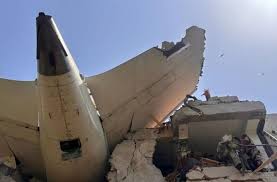
Air India pilots recently recreated the doomed flight’s configuration using a simulator, replicating conditions such as deployed landing gear.
More than two weeks after the crash of the Air India Boeing 787 in Gujarat’s Ahmedabad that left 241 of the 242 passengers along with several others on ground dead, the cause of the catastrophic tragedy still remains unknown with investigators and airline officials carrying out a probe.
Those probing the June 12 Air India plane crash are focusing on a potential dual engine failure as a key factor that may have prevented the aircraft from staying airborne.
Air India pilots recreate AI171’s configuration
Air India pilots recently recreated the doomed flight’s configuration using a simulator, replicating conditions such as deployed landing gear and retracted wing flaps.
A Bloomberg report, which cited sources familiar with the investigation, said that those settings alone were not enough to cause a crash—narrowing the spotlight onto possible mechanical or electrical failure.
The new findings through the simulated flights, combined with the earlier discovery that the plane’s emergency power turbine deployed seconds before impact, led the pilots who conducted the recreation to zero in on a potential technical failure.
The simulated flight was conducted separately from the official probe being led by India’s Aircraft Accident Investigation Bureau (AAIB), and was done to explore possible scenarios, one of the people familiar with the matter said.
“This is part of a broader attempt to explore every possibility,” said one person close to the probe, who requested anonymity because the deliberations are not public.
The June 12 crash Air India AI171 marked the deadliest aviation accident in India in decades—and the first total loss of a Boeing 787 Dreamliner. The aircraft, equipped with two General Electric engines, struggled to gain altitude and crashed into a medical college’s hostel building shortly after takeoff.
Suspicion of engine or power Failure
While Boeing declined to comment, referring inquiries to the AAIB, GE also said it could not comment on an active investigation. Neither the AAIB nor Air India has responded publicly to the latest developments.
Why or how both engines might have simultaneously lost thrust remains unclear. However, analysis of the flight recorders—whose data has now been extracted—is expected to offer key insights next week. Investigators are reviewing a wide range of possible causes, but technical issues, particularly with the engines or electrical systems, are emerging as a focal point.
Aircraft’s landing gear appeared tilted
Pilots reviewing crash footage noted that the aircraft’s landing gear appeared tilted forward, a sign that the retraction sequence may have begun. But notably, the gear doors had not opened—something experts say could point to a hydraulic failure or a broader power loss.
This suspicion is reinforced by the activation of the aircraft’s emergency turbine, known as the RAT (Ram Air Turbine), which reportedly deploys when there is a significant electrical failure.
While critical in maintaining basic systems, the RAT is far too small to provide thrust or keep a plane aloft.
Just 15 seconds
People familiar with the investigation have confirmed that the wing flaps and slats, which help create lift during takeoff, were properly extended. Still, the aircraft lost control quickly. Pilots managed to send a Mayday distress call—but there were only about 15 seconds between the call and the crash, according to two people familiar with the data.
Teams from Boeing and the US National Transportation Safety Board (NTSB) are assisting the AAIB on-site.
There’s no word yet on when a detailed readout from the black boxes—containing both flight data and cockpit audio—will be released but some reports said it is expected next week.
Black box data typically reveals an aircraft’s performance metrics and pilot dialogue in the moments before a crash.




